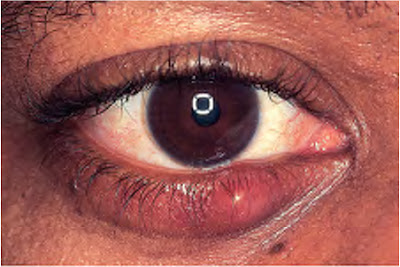The Stress Response:In stress (as in threatening situations that we are unable to cope with) messages are carried along neurones from the cerebral cortex (where the thought processes occur) and the limbic system to the Hypothalamus.
The Anterior Hypothalamus produces sympathetic arousal of the Autonomic Nervous System (ANS). The ANS is an automatic system that controls the heart, lungs, stomach, blood vessels and glands. Due to its action we do not need to make any conscious effort to regulate our breathing or heart beat. The ANS consists of : the sympathetic nervous system and the parasympathetic nervous system. Essentially, the parasympathetic nervous system conserves energy levels. It increases bodily secretions such as tears, gastric acids, mucus and saliva which help to defend the body and help digestion. Chemically, the parasympathetic system sends its messages by a neurotransmitter acetylcholine which is stored at nerve endings.
Unlike the parasympathetic nervous system which aids relaxation, the sympathetic nervous system prepares the body for action. In a stressful situation, it quickly does the following:
* Increases strength of skeletal muscles
* Decreases blood clotting time
* Increases heart rate
* Increases sugar and fat levels
* Reduces intestinal movement
* Inhibits tears, digestive secretions.
* Relaxes the bladder
* Dilates pupils
* Increases perspiration
* Increases mental activity
* Inhibits erection/vaginal lubrication
* Constricts most blood vessels but dilates those in heart/leg/arm muscles

The main sympathetic neurotransmitter is noradrenaline which is released a the nerve endings. The stress response also includes the activity of the adrenal, pituitary and thyroid glands.
The two adrenal glands are located one on top of each kidney. the adrenal medulla is connected to the sympathetic nervous system by nerves. Once the latter system is in action it instructs the adrenal medulla to produce adrenaline and noradrenaline (catecholamines) which are released into the blood supply. The adrenaline prepares the body for flight and the noradrenaline prepares the body for fight. They increase both the heart rate, and the pressure at which the blood leaves the heart; they dilate bronchial passages and dilate coronary arteries; skin blood vessels constrict and there is an increase in metabolic rate. Also gastrointestinal system activity reduces which leads to a sensation of butterflies in the stomach.
Lying close to the hypothalamus in the brain the pituitary gland. In a stressful situation, the anterior hypothalamus activates the pituitary. The pituitary releases adrenocorticotrophic hormone (ACTH) into the blood which then activates the outer part of the adrenal gland, the adrenal cortex. This then synthesises cortisol which increases arterial blood pressure, mobilises fats and glucose from the adipose (fat) tissues, reduces allergic reactions, reduces inflammation and can decrease lymphocytes that are involved in dealing with invading particles or bacteria. Consequently, increased cortisol levels over a prolonged period of time lowers the efficiency of the immune system. The adrenal cortex releases aldosterone which increases blood volume and subsequently blood pressure. Unfortunately, prolonged arousal over a period of time due to stress can lead to essential hypertension.
The pituitary also releases thyroid stimulating hormone which stimulates the thyroid gland, to secrete thyroxin. Thyroxin increases the metabolic rate, raises blood sugar levels, increases respiration/heart rate/blood pressure/and intestinal motility. Increased intestinal motility can lead to diarrhoea. (It is worth noting that an over-active thyroid gland under normal circumstances can be a major contributory factor in anxiety attacks. This would normally require medication.)
The pituitary also releases oxytocin and vasopressin which contract smooth muscles such as the blood vessels. Oxytocin causes contraction of the uterus. Vasopressin increases the permeability of the vessels to water therefore increasing blood pressure. It can lead to contraction of the intestinal musculature.
However, for many people they perceive everyday of their life as stressful. Unfortunately, the prolonged effect of the stress response is that the body's immune system is lowered and blood pressure is raised which may lead to essential hypertension and headaches. The adrenal gland may malfunction which can result in tiredness with the muscles feeling weak; digestive difficulties with a craving for sweet, starchy food; dizziness; and disturbances of sleep.









































